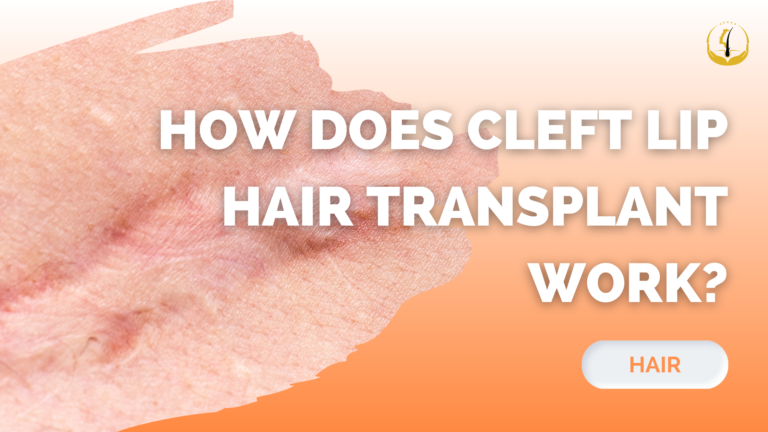Hair loss can be a distressing experience for anyone, impacting not only our physical appearance but also our self-esteem. While we often associate hair loss with the scalp, it’s important to recognize that hair loss can affect other parts of the body, including the face. One such condition is cleft lip, which can lead to a noticeable absence of hair in the affected area. In this blog, we will be exploring how cleft lip hair transplant clinic can provide a solution for this unique hair loss issue.
Cleft Lip and Its Impact on Hair Loss
A cleft lip is a congenital condition that occurs during fetal development, resulting in a split or gap in the upper lip. While the primary concern for individuals with a cleft lip is often related to the appearance of the lip itself, it’s not uncommon for this condition to affect the surrounding facial hair as well. Hair follicles in the affected area may be sparse or even absent, leading to a noticeable gap in facial hair growth.
FUE Hair Transplant: The Hair Loss Solution
FUE hair transplant is a minimally invasive surgical procedure that has gained popularity as an effective hair loss solution. Unlike traditional hair transplant methods, FUE does not involve a linear incision or sutures, making it an ideal choice for addressing hair loss in sensitive areas like the cleft lip.
Here’s how cleft lip hair transplant with FUE works:
- Consultation and Assessment: The journey begins with a consultation with a qualified hair transplant surgeon who specializes in facial hair restoration. During this consultation, the surgeon will assess the extent of hair loss and discuss your goals and expectations.
- Donor Hair Extraction: In FUE, hair follicles are extracted individually from a donor area, typically the back or sides of the scalp. The surgeon uses a small, specialized tool to remove each follicle, leaving tiny, nearly invisible puncture marks.
- Graft Preparation: The extracted hair follicles are then carefully prepared for transplantation. Each graft is trimmed and sorted to ensure they are viable for transplantation.
- Anesthesia: Local anesthesia is administered to both the donor and recipient areas to ensure that the procedure is painless and comfortable for the patient.
- Graft Implantation: The surgeon makes tiny, precise incisions in the cleft lip area where hair is needed. The prepared grafts are then meticulously implanted into these incisions.
- Recovery and Healing: After the procedure, patients can expect some redness and minor swelling in both the donor and recipient areas. However, these side effects typically subside within a few days, and patients can resume their normal activities.
- Results: Over the next several months, the transplanted hair follicles will begin to grow naturally. With proper care and follow-up appointments with the surgeon, patients can expect long-lasting, natural-looking results.
Benefits of Cleft Lip Hair Transplant with FUE
- Natural Appearance: FUE hair transplant delivers natural-looking results, ensuring that the transplanted hair seamlessly blends with the surrounding facial hair.
- Minimally Invasive: The absence of a linear incision means minimal scarring, making FUE an excellent choice for facial hair restoration.
- Precision: FUE allows for precise placement of individual hair follicles, ensuring that the transplanted hair matches the patient’s desired aesthetic.
- Quick Recovery: Patients can typically return to their regular activities within a few days, making FUE a convenient option for busy individuals.
Hair Loss Tips for Cleft Lip Patients
In addition to considering a cleft lip hair transplant, individuals with this condition can take steps to manage and maintain their facial hair:
- Healthy Lifestyle: A balanced diet and proper hydration can support overall hair health.
- Gentle Care: Be gentle when grooming facial hair to avoid any unnecessary stress on the hair follicles.
- Consultation: Regular consultations with a hair transplant specialist can help monitor hair growth and address any concerns.
Hair loss, whether on the scalp or in unique areas like the cleft lip, can have a significant impact on one’s self-esteem and overall well-being. Fortunately, FUE hair transplant offers a viable solution for individuals dealing with hair loss in the cleft lip area. If you’re considering a cleft lip hair transplant as your hair loss solution, remember to consult with GLOJAS experts who specializes in facial hair restoration. With the right expertise and approach, you can achieve the results you desire and enhance your self-confidence.
At Glojas, we welcome clients to reach out to us directly to schedule a free initial consultation. We offer guidance and valuable insights on how best to address your specific challenges. Let us assist you in navigating your journey with confidence and clarity.
